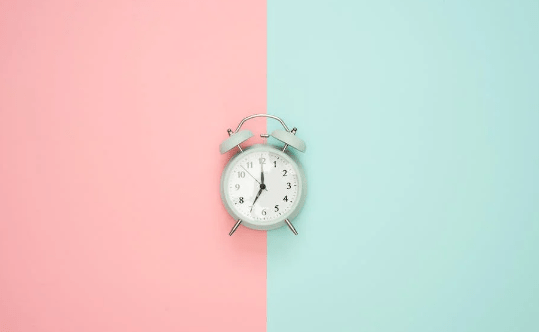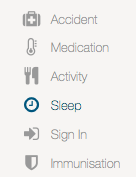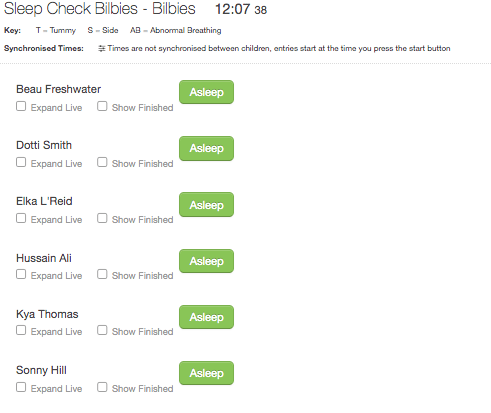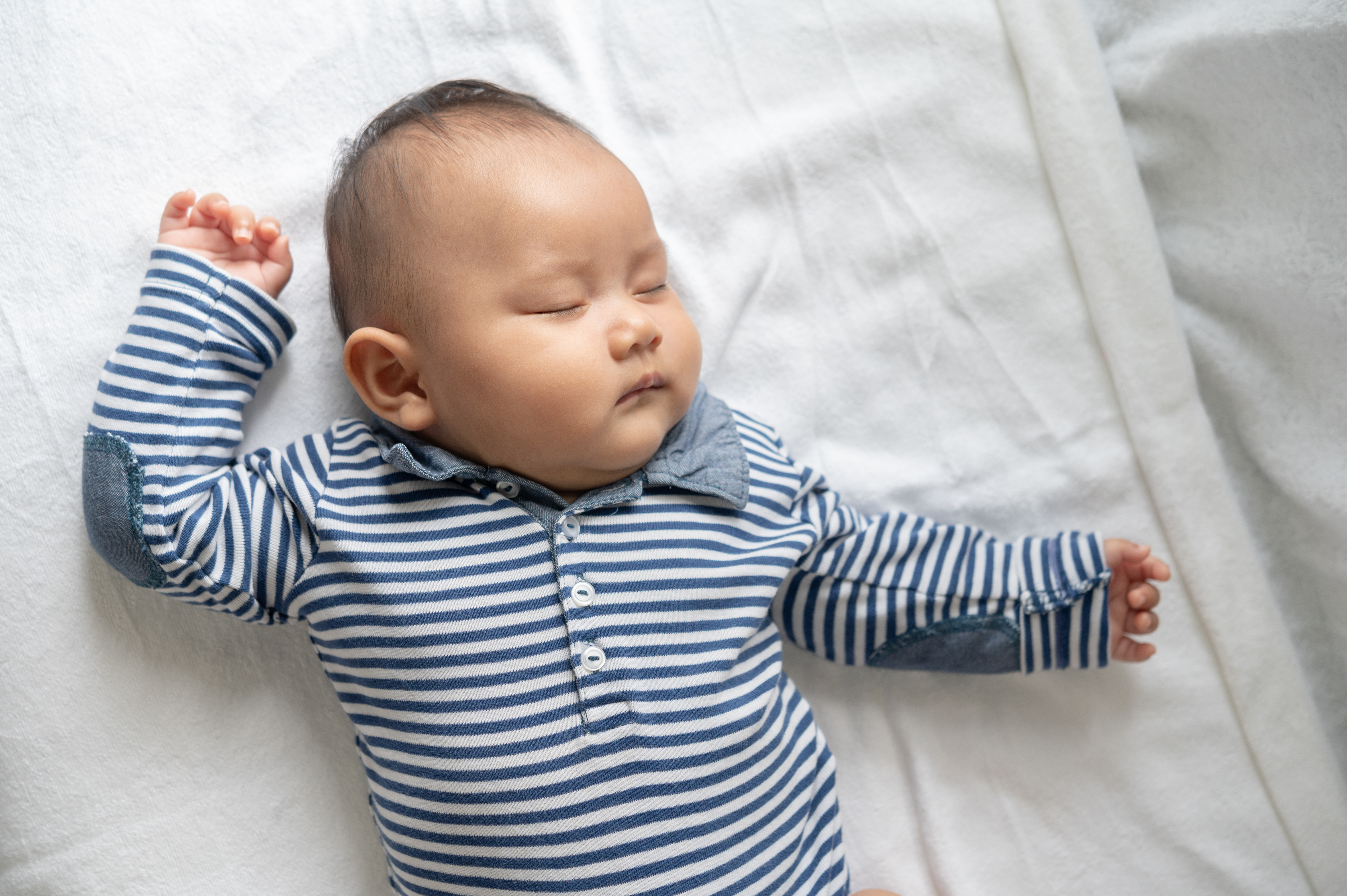Have you used the new sleep feature in your Kinderloop yet?
Our new sleep feature can be used to create custom sleep-check charts, enabling you to accurately record an infant or young child’s sleep.
Safe Sleep Checks
Sleep, rest and relaxation in Early Childhood Education & Care (ECEC) settings are an essential part of the daily rhythm. ECEC providers and educators have a duty of care to ensure children are kept safe whilst sleeping. Here in Australia, safe sleep requirements in ECEC have been in place since 2017.
Regulation 168 in the National Regulations, requires that each ECEC service must have policies and procedures on ‘sleep and rest for children and infants’, including matters set out in Regulation 81 (sleep and rest).
Because of these regulations, many ECEC services have adopted safe sleep checks into their sleep procedures (as recommended by Red Nose Australia). These checks are often carried out every 5 or 10 minutes by educators, who check and document the position, colour and breathing of an infant or child.
CUE… Kinderloop’s Sleep Feature!
Here at Kinderloop we want to support your service to accurately record the sleep of children in your care. Kinderloop has created a sleep timer that times each child’s sleep and allows you to note an infant or child’s position, breathing and colour (you can customise this to suit your service).
**Please note that while we have created an absolutely amazing sleep timer to record sleep checks, it CANNOT replace physical checks and close supervision**

Setting up your Sleep Chart
STEP 1 –
Set your sleep chart up on the web version of Kinderloop. Go to settings > sleep > select the ready to go template ‘sleep check’ or if you’d like to create your OWN sleep template from scratch, select > add new template


STEP 2 –
Here you can customise your own sleep check-chart, you can adjust the settings to reflect your services policies & procedures. For example, you can select the interval time between checks, or change/add any types of checks your’d like to record. Then, simply add a group to your selected chart and its ready to use!

Using your Sleep Chart
STEP 1 –
Select the ‘knife & fork’ icon to use your new sleep chart. Here you will see the list of children in your selected group

STEP 2 –
Getting started couldn’t be easier, just hit the ‘asleep’ button once a child goes to sleep. This starts the timer. The child’s name will turn blue and provide you with the time the next check will be required (dependant on your interval selection).

STEP 3 –
Once your chosen interval-time is up, the child’s name will appear green, indicating that you need to select one of the pre-chosen sleep positions/colour. Once this is selected, the next interval-time will start… and so on.

STEP 4 –
If you have forgotten to enter the sleep information within the selected interval-time, the chart will turn red to remind you.

STEP 5 –
Once a child has woken up, you can simply press the ‘awake’ button and the sleep chart will neatly record all of your timed information. To view this information you can click on the ‘show finished’ button

Finally, you always have access to historic sleep chart information, simply click on the blue calendar in your sleep setting and select the date(s) you wish to view!
Safe Sleep Recommendations
Safe sleep recommendations can be found here at Rednose Australia who helped form the foundation for safe sleep practices within the National Quality Standards (NQS).
Rednose Australia recommend that:
➡️ Children should always be in sight and hearing distance of a qualified childcare staff member so they can check on their breathing and colour of their skin – and intervene if something goes wrong.
➡️ Monitoring of sleeping children is best done physically at the bedside, rather than through a monitor or viewing window.
➡️ In young children the signs of a problem can be very subtle so carers need to physically check the child. This is so the carer can listen to the child’s breathing and really see the colour of the child’s skin.
Happy Kinderlooping!
Follow along on our social pages to ensure you don’t miss out on all of the Kinderloop tips & hints, and learn about our new features!
Facebook
Instagram
